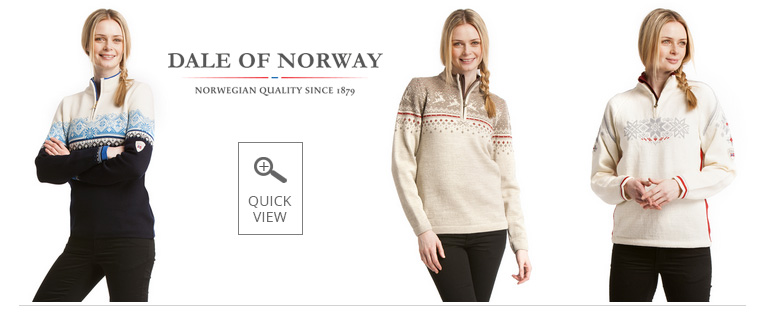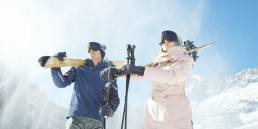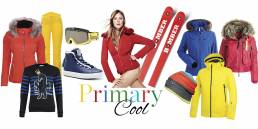Dale of Norway: The Classic Norwegian Ski Sweater
Picture this: Leather chairs, a glass of wine, a fire in the grate, a frosted ski lodge window. There’s a man and a woman seated on the hearth. Chances are, they’re wearing Dale of Norway.
Norwegian sweaters, popular among skiers, have been synonymous with the sport of skiing since… well, since the beginning. Before Gore-tex, Polartec and Neoshell became our go-to waterproof fabrics, there was the classic woolen ski sweater. Warm, brightly colored, designed traditionally with images of deer and Ullr gods and intricate snowflakes, we remember the men and women of the 1940s sporting long wooden skis, leather boots, poles with massive metal baskets, and one of these sweaters.
Fast forward to 2015, not much has changed. While DWR and Thinsulate technologies commit to keeping us dry and warm, there are few items in a skier’s closet quite as classic — and as timeless — as a Dale of Norway sweater.
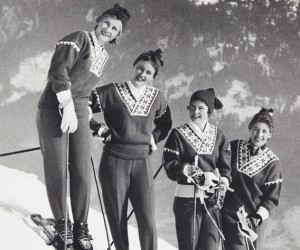
Wool: Nature’s High-Tech Fiber Dale of Norway began as the experiment of Peter Jepson, a Bergen-born textile engineer, who, in 1879, moved back from England to the Valley of Dale in Norway. Enchanted by the landscape — waterfalls, verdant valleys, undulating snowy mountains — this Nordic skier locked onto the concept of hydro power used in the manufacture of textiles. He began Dale of Norway, a company dedicated to the production of durable knits with the help of hydro electricity.
“Knitwear was always Dale’s focus,” explains Henrik Lumholdt, head of Dale’s North American operations. “Farmers, fishermen, sportsmen — wool was the Gore-tex of the day; it could protect you better than any other fiber.”
Dale’s Norwegian sweaters spread like wildfire though Europe, establishing themselves as the workwear of the day — strong, durable, and capable of taking a beating. Queue the couple seated before the roaring fire, in the shadow of frosted ski lodge windows: before long, skiers — especially those in North America — were wearing Dale of Norway sweaters, too.
The Authentic Norwegian Sweater Today, Dale of Norway sweaters look much the same as they did in the 1940s. Designs remain classic, with snowflakes and edelweiss and racing stripes lovingly depicted in intricate patterns. These patterns are what Lumholdt calls “authentic Norwegian.” Dale’s design team spends hundreds of hours in textile museums searching historical documents for old patterns. “Once they find a pattern of interest,” he says, “they take use it to combine elements and develop a new one. Everything has its root in an old Norwegian tradition.”
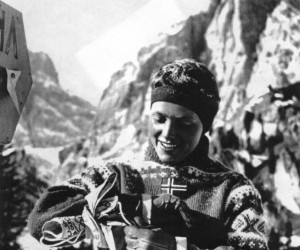
Hundreds of years ago, designs on sweaters were used to fend off superstitions and evil spirits. “Norwegian wives would knit sweaters with motifs to protect husbands in the field — men who were going hunting and fishing,” says Lumholdt. For example, the image of an unbreakable nut knit into a sweater meant the garment would be strong and would protect its wearer. Similarly, this season’s new Christiania design is based on patterns depicted in sweaters worn by women way back when the Norwegian capital, Oslo, was known as “Christiania.” These stories, say Lumholdt, are featured on Dale of Norway’s webpage—a customer can discover more about the background of Dale’s current collection.
Dale’s Latest Collection As for cut and fit of Dale of Norway sweaters, this latest collection categorizes garments into three groups:
1. Fitted, midlayer sweaters made of Norwegian wool that fit easily under jackets and are ideal for skiing.
2. Heavier sweaters crafted from heavier wools, used for hiking, or walking, or Nordic skiing.
3. Dale’s knitted shells — a laminated knit and liner combination that’s water repellent and designed to stop the wind.
All Dale of Norway sweaters continue to be made in the Dale Valley, where production continues to be generated by sustainable hydroelectricity. Dale’s knitwear is also crafted with 100% natural wool — a resource Dale likes to call “nature’s own high-tech fiber.”
For more on the 2015 collection of Dale of Norway’s classic knits, visit the company’s website: www.DaleOfNorway.com


